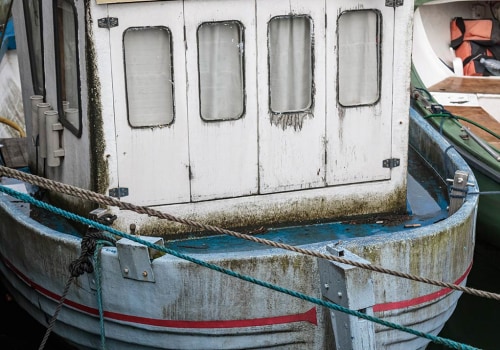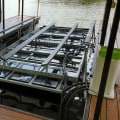Welcome to our comprehensive guide on piling dock design! Whether you're a homeowner looking to build a new dock or a business owner in need of a sturdy and functional dock for your commercial operations, this article has got you covered. We understand that the process of designing and building a dock can be overwhelming and confusing, but don't worry - we've done the research and gathered all the essential information for you. From the basics of Dock Construction near Beaufort SC to the latest design trends and maintenance tips, this article will serve as your ultimate resource for all things piling dock design. As part of our Silo on Dock Construction and Installation and Dock Design and Layout, we will delve into the topic of piling dock design near Beaufort SC to help you make informed decisions for your project. Whether you're looking for information on specific materials, techniques, or design considerations near Beaufort SC, we've got you covered.
Our goal is to provide you with all the necessary knowledge to ensure that your piling dock is not only functional but also visually appealing. So, if you're ready to learn everything there is to know about piling dock design, let's dive in!When it comes to building a dock for your boats or watercraft, there are many important factors to consider. One of the most crucial aspects is the piling dock design. The right design can make all the difference in terms of functionality, safety, and environmental impact. In this comprehensive guide, we will break down the key components of piling dock design and provide you with all the information you need to make informed decisions.
Understanding Piling Materials
Piling materials are the foundation of any dock.They serve as the support system that holds the entire structure in place. There are different types of piling materials to choose from, including wood, concrete, and steel. Each has its own unique properties and advantages, so it's important to understand them before making a decision. Wooden pilings are a popular choice due to their affordability and ease of installation. However, they may not be as durable as other materials and can be susceptible to rot and marine borers.
Concrete pilings, on the other hand, are known for their strength and durability. They are also resistant to marine organisms and can withstand harsh weather conditions. Steel pilings offer a combination of strength and flexibility, making them a great choice for areas with high water levels.
Determining the Right Size and Layout
The size and layout of your piling dock will depend on several factors, such as the size of your boat or watercraft, the water depth, and the intended use of the dock. It's important to consider all of these factors to ensure that your dock is safe and functional. For example, if you have a larger boat or multiple watercrafts, you will need a larger dock with more pilings for support.You will also need to take into account the water depth to ensure that the pilings are long enough to provide adequate support. The layout of the dock is also important, as it should allow for easy access and maneuvering of boats.
Safety Considerations
Safety should always be a top priority when it comes to piling dock design. The structure should be designed to withstand the weight of boats and any potential impacts from waves or currents. It's also important to consider factors such as slip resistance and lighting for nighttime use. In addition, it's important to follow all local regulations and obtain any necessary permits before building a piling dock.This will ensure that the structure is built safely and in compliance with all relevant laws and regulations.
Environmental Impact
When building a piling dock, it's important to consider the potential impact on the surrounding environment. This includes the water quality, marine life, and shoreline erosion. Choosing the right piling material and properly maintaining the dock can help minimize any negative effects on the environment.In Conclusion
Piling dock design is a crucial aspect of building and maintaining a functional and safe dock for your boats or watercraft. By understanding the different types of piling materials, determining the right size and layout, considering safety measures, and being mindful of the environmental impact, you can make informed decisions and create a dock that meets your needs and stands the test of time.Types of Piling Materials
When it comes to piling dock design, one of the most important decisions you will have to make is what type of piling material to use.Each material has its own unique pros and cons, and understanding them is crucial in ensuring the longevity and stability of your dock.
Wood:
One of the most commonly used materials for piling docks, wood offers a natural and aesthetically pleasing look. It is also relatively inexpensive and easy to work with. However, wood is prone to rot and decay, especially in a marine environment.Steel:
Steel piling is strong and durable, making it a popular choice for commercial docks. It is also resistant to rot and decay.However, it can be expensive and requires specialized equipment for installation.
Concrete:
Concrete offers high strength and durability, making it suitable for heavy-duty docks. It is also resistant to corrosion and marine organisms. However, concrete can be costly and time-consuming to install.Composite Materials:
A relatively new option for piling docks, composite materials offer the best of both worlds - the strength of steel and the resistance to corrosion of concrete. They are also lightweight and easy to install.However, they can be more expensive than other materials.
Environmental Impact
When building a piling dock, it's important to consider the potential environmental impact it may have on its surroundings. Docks can affect the water quality, wildlife habitats, and overall ecosystem of the area. One of the main concerns with piling docks is the potential for erosion. The constant movement of water around the pilings can cause erosion and sedimentation, which can harm aquatic plants and animals. To mitigate this, it's important to properly secure the pilings and use erosion control measures such as riprap or vegetation. Another environmental consideration is the materials used in the construction of the dock.Using sustainable materials such as recycled plastic or composite decking can reduce the impact on natural resources. Additionally, choosing materials that are resistant to rot and corrosion can decrease the need for frequent replacements and reduce waste. Proper maintenance is also crucial in minimizing the environmental impact of your dock. Regularly inspecting and repairing any damage can prevent pollutants from entering the water and harming marine life. It's also important to properly dispose of any waste or chemicals used in maintenance. By carefully considering the environmental impact of your piling dock and taking steps to mitigate any negative effects, you can enjoy your dock while also preserving the natural environment.
Safety Considerations
When it comes to designing a piling dock, safety should be your top priority.A dock that is not properly anchored or lacks proper railings can pose a serious risk to both people and boats. To ensure the safety of everyone who uses your dock, it's important to understand the following safety considerations:Proper Anchoring:The anchoring system is what keeps your dock in place and prevents it from drifting away. It's crucial to choose the right type of anchors for your specific location and water conditions. In areas with strong currents or rough waters, heavier anchors and more anchor lines may be necessary.
Regularly checking and maintaining your anchors is also important to ensure their effectiveness.
Railing Requirements:
Railings are an essential safety feature for any dock, as they provide a barrier to prevent people from falling into the water. The height and spacing of railings must meet local building codes and regulations, so it's important to research and adhere to these requirements when designing your dock. Additionally, regular inspections and maintenance of railings should be done to ensure they are secure and in good condition. By understanding and implementing proper anchoring and railing requirements, you can create a safe and secure piling dock for you and your guests to enjoy.Determining the Right Size and Layout
One of the most important aspects of piling dock design is determining the right size and layout for your specific needs and budget. This can be a daunting task, but with the right knowledge and calculations, you can ensure that your dock fits your needs perfectly. The first step is to assess your needs.How many boats or watercraft do you need to accommodate? What types of activities will you be using the dock for? Will there be any additional features, such as a seating area or storage space?Once you have a clear understanding of your needs, it's time to calculate the size of your dock. This will depend on factors such as water depth, shoreline conditions, and the type and size of boats or watercraft you will be using. It's important to also consider any potential future needs, such as additional boats or equipment. Next, you'll need to determine the layout of your dock. This will also depend on your specific needs and budget.
Some common layouts include straight docks, L-shaped docks, and T-shaped docks. It's important to consider factors such as ease of access, visibility, and any potential obstacles when choosing your layout. Lastly, don't forget to factor in your budget when determining the size and layout of your dock. While it may be tempting to go for a larger or more elaborate design, it's important to choose a size and layout that fits within your budget and meets your needs. Congratulations! You now have a solid understanding of piling dock design. By following the guidelines outlined in this article, you can confidently build, install, and maintain a dock that meets your needs and budget.
Remember to always prioritize safety and consider the environmental impact of your dock. Happy boating!.






